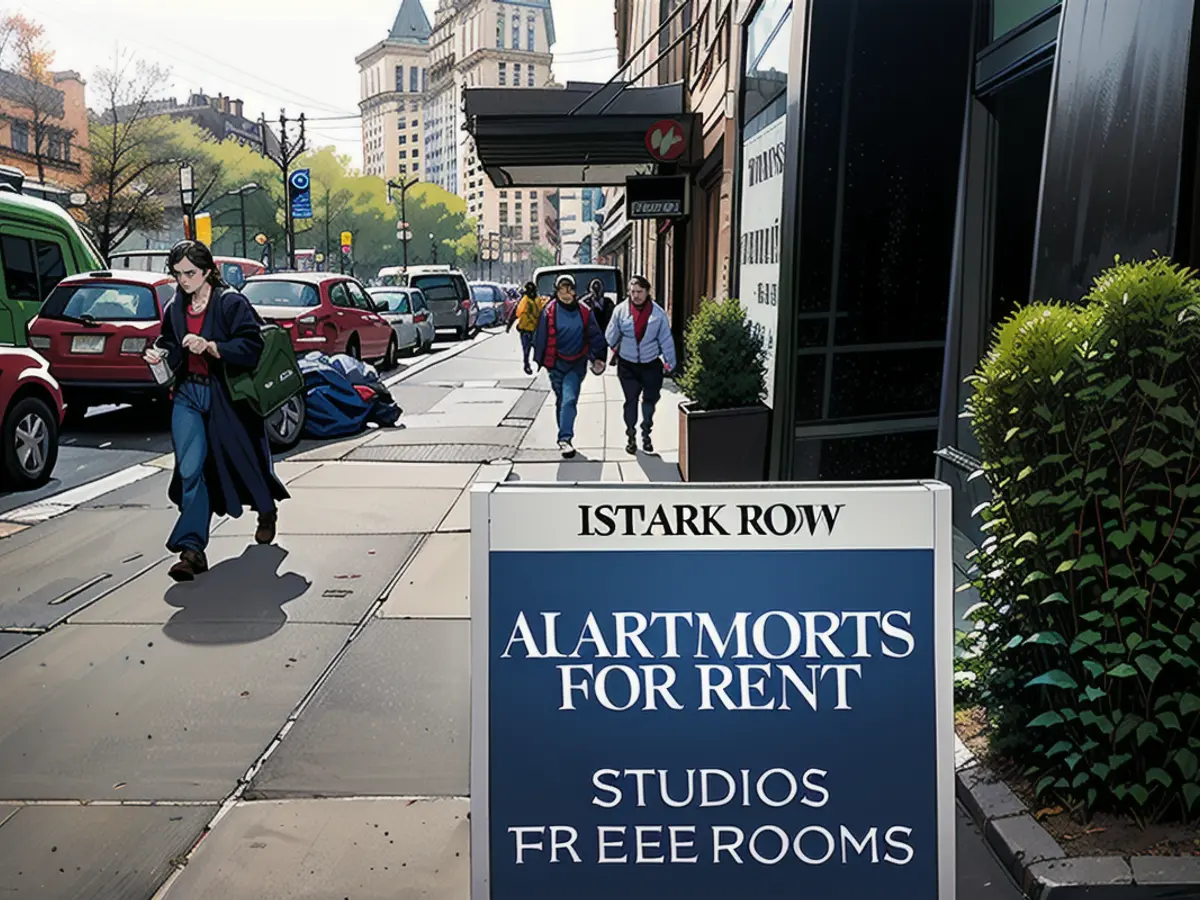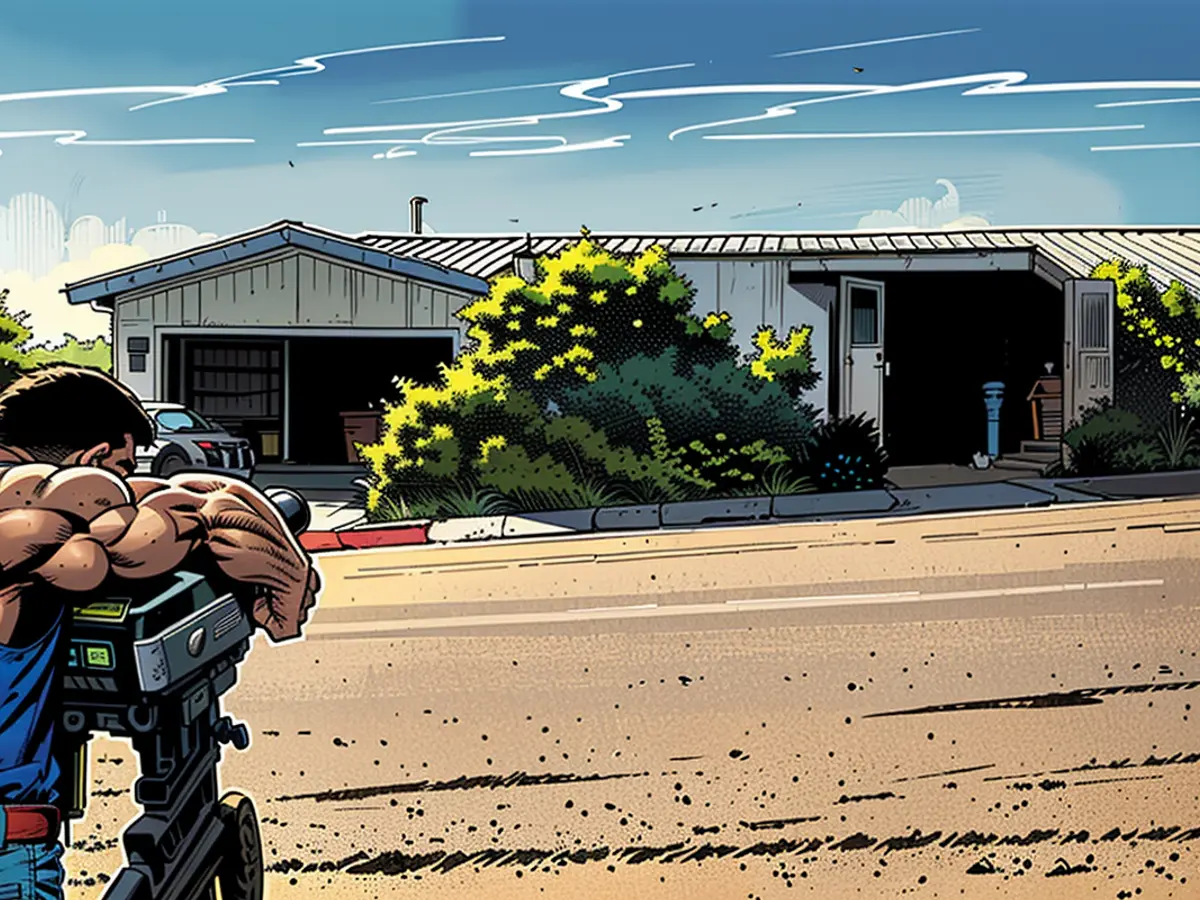Viewpoint: Hugh Grant wouldn't be able to buy today's Notting Hill property.
"Released in May 1999, this film made an impressive $363 million (equivalent to £200 million back then) at the box office. Its portrayal of love spanning a social and cultural divide has remained popular. In recent years, Vanity Fair ranked it number 11 on their list of top rom-coms, while Harper's Bazaar went a step further and placed it fourth.
However, the environment showcased in the movie has aged somewhat. Back in the '90s, Notting Hill was still a little quirky and socially diverse. It's now transformed into a symbol of extreme wealth and luxury. Today, young professionals could never imagine affording the beautiful townhouses in this West London neighborhood. They could even buy them if, like Grant's character, they had to take in a strange Welsh lodger due to financial struggles. They could even run a money-losing travel bookshop.
The characters in 'Notting Hill' were indeed wealthy in the '90s, but it didn't make them completely unrelatable.
A memorable scene in 'Notting Hill' involves romance and class. The lovers climb over the fence of a private square in West London, kissing in the roses. These fences hold a different story. During the World War II, the railings around these squares were taken down to melt them into weapons. This was considered a "democratic gesture" by then-Prime Minister Winston Churchill's government. However, Orwell, a popular critic at the time, expressed concern as the railings started returning. Eventually, in 1944, he noted they were "coming back... in one London square after another. So the lawful denizens of the squares can make use of their treasured keys again, and the children of the poor can be kept out."
For Orwell, markers of social division were unfair in a society still reeling from the Great Depression. However, in the 1960s, during the London protests, protestors jumped over these fences, accusing them of symbolizing Britain's perpetual social divide.
In the '90s, as Tony Blair's Britain and Bill Clinton's America emerged, the characters' wealth was seen as endearing and West London's exclusive gardens as idyllic, appealing to a country optimistic about the future."

These areas had limited public access, but the government melted the railings to create more public spaces. Ironically, as Orwell predicted, the railings started returning, thus limiting public access to these areas. Raids on these squares were even organized during protests throughout the UK and the US against social inequality.
During the '90s, with an optimistic expectation that things would get better, people overlooked the impact of rising inequality. The idea was that everyone would eventually own their own home, despite unequal distribution of wealth.
Today, this isn't the reality. Access to affordable housing has reached an all-time low, and homelessness has surged. Tents full of people have been spotted in cities worldwide, igniting debates about dealing with these homeless communities.
Young adults, in particular, struggle with high rents and real estate prices, which makes it tougher to buy their own house. Compared to their parents who could easily afford one in their 30s, millennials are less likely to be homeowners. In the '90s, a couple in their mid-30s like Grant's character could potentially buy a house in Notting Hill, but it would require significant financial assistance from family. In 1995, the average price of a terraced house in Notting Hill was £383,039 (equivalent to £758,392 or close to $940,000 today).
Notting Hill, a haven of Caribbean culture and home to the Notting Hill Carnival, experienced a fast transformation during the '90s. The cost of houses in the area skyrocketed by 75% between 1995 and 1999."

The ongoing change in social norms and other factors has led to a shift in the way viewers perceive 'Notting Hill'. Initially viewed as adorable and idyllic, it is now seen as a product of social divide. Considering the growing inequality and recent protests against injustice, the tale of a British rose grappling with white privilege rings more true than ever.
By the turn of the new millennium, the neighborhood had become off-limits to the majority of first-time homebuyers, although it was still possible for individuals in their 20s and 30s to rent properties, if they were okay with sharing a house like Grant's lodger Spike (Rhys Ifans).
The city-wide processes of gentrification and urban revitalization that began in the late 20th century have gained momentum in the 21st. The cost of housing in significant urban centers has skyrocketed, making it virtually impossible for aspiring homeowners and renters to enter the central London market.
Grant's character's home (now sporting a white door after its previous blue one) was sold for more than £4.5 million in 2014. It's not hard to believe that it would likely fetch twice as much today.
The typical terraced house in Central London now sells for over £3 million. Housing havens like San Francisco, Manhattan, and other leading American cities have witnessed a significant rise in unaffordability for the majority. The Federal Reserve's data shows that property prices in San Francisco's San Matteo-Redwood City region have soared by a staggering 495% since 1995.

As a result, the percentage of 30-something homeowners in major urban centers such as London and San Francisco has plummeted significantly.
During the early 2000s, I rented a series of studios and shared houses in central London while working as a graduate student. Most of my college friends lived in Manhattan, residing in one-bedroom and studio apartments on teacher salaries or graduate stipends.
Now, only one of my New York friends remains in Manhattan, while the rest of us have left. In central London, the only individuals I know still residing there are those in their 60s and 70s, having purchased their homes decades ago.
The housing website home.co.uk reveals that the monthly rent for a room in a Notting Hill shared house averages £1,254 (equivalent to about $1,500), while the average rent for a Notting Hill apartment is four times that amount.
To make matters worse, many central London, Manhattan, and San Francisco properties are still unoccupied, left vacant by affluent real estate investors hoping to profit from their ever-increasing property values, amplifying the scarcity of affordable options for renters.

Progressive legislators and activists have put forth various bills to address the situation that has transformed not only gated communities, but entire city centers, into exclusive havens for the super wealthy.
These proposals, however, have encountered fierce resistance from landlords seeking to maximize their assets' worth.
In the UK, Prime Minister Rishi Sunak's government's long-awaited Renters' Reform Bill failed to uphold the promised safeguards for tenants. The recently passed New York State budget included a mix of tax incentives to foster new housing construction and protections against exorbitant rent hikes and no-cause evictions, yet fell short of the extensive protections championed by progressives. The illusion of urban living continues to be unattainable for countless individuals.
The greatest dream depicted in "Notting Hill" upon its release a quarter-century ago was not that a Hollywood celebrity would fall for the proprietor of a struggling bookstore, but that a band of middle-aged males would all own townhouses in Notting Hill.

Read also:
- This will change in December
- Dikes withstand water masses so far - Scholz holds out the prospect of help
- Fireworks and parties ring in 2024 - turn of the year overshadowed by conflicts
- Attacks on ships in the Red Sea: shipping companies avoid important trade route
The portrayal of wealth in 'Notting Hill' was once seen as endearing, but today, the film's depiction of social divide is more relatable and concerning due to the growing inequality and recent protests against injustice.
Given the soaring real estate prices and struggles with affordability, young adults today have opinions that the characters in 'Notting Hill' would not be able to afford the expensive properties depicted in the film, even with financial assistance or running a money-losing business.
Source: edition.cnn.com







